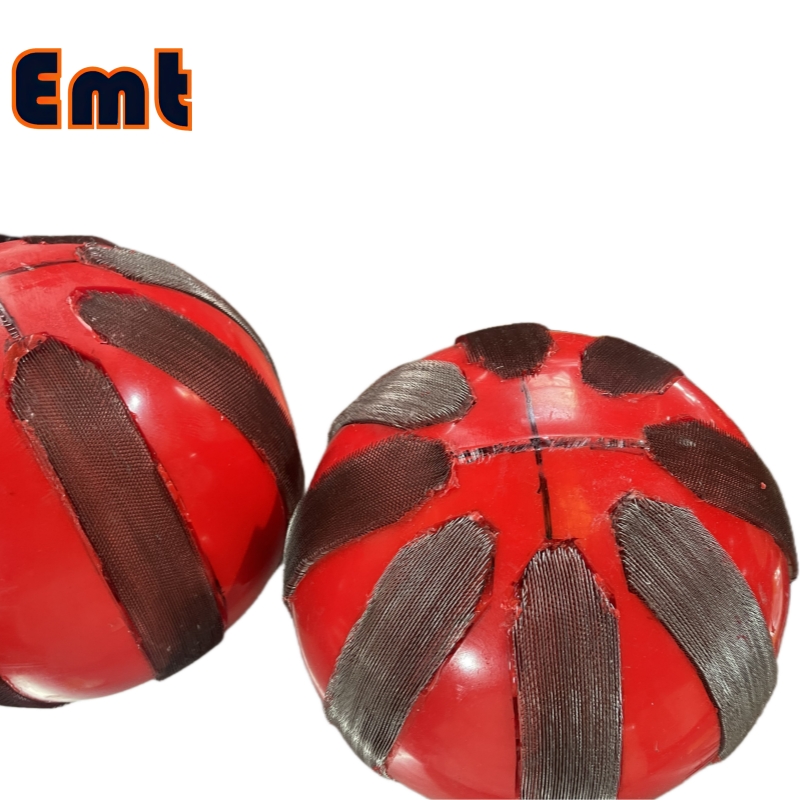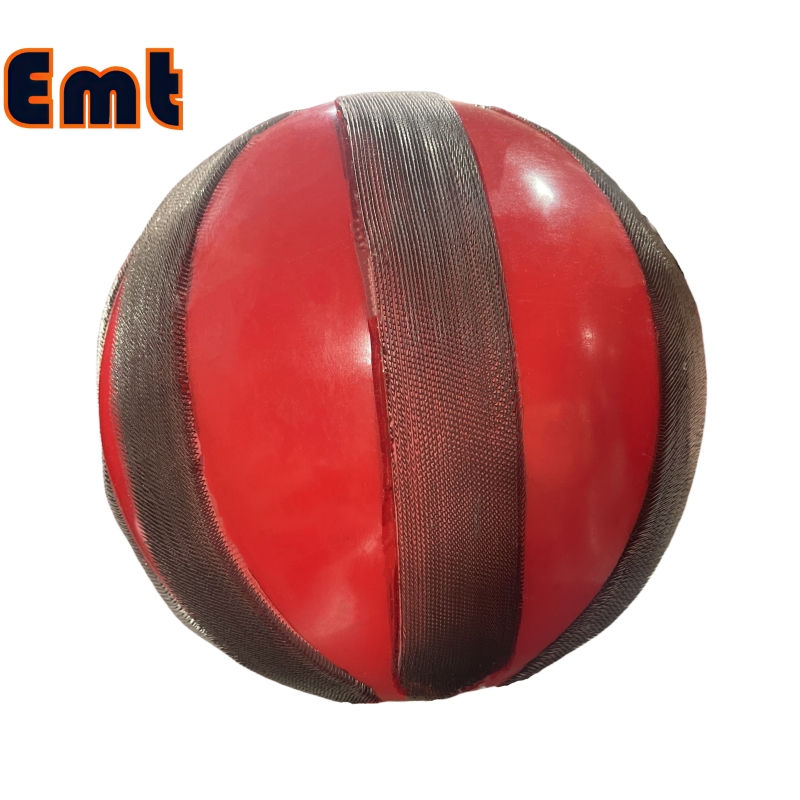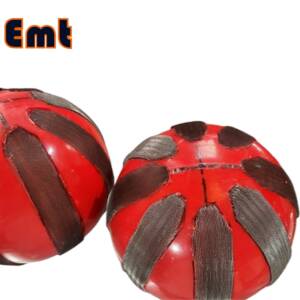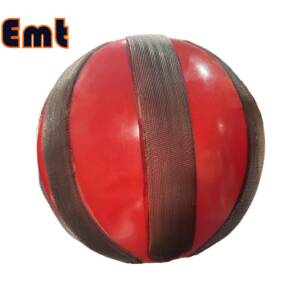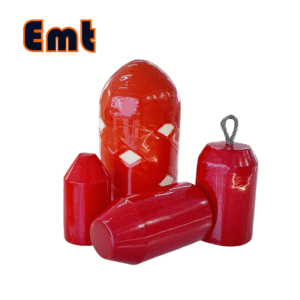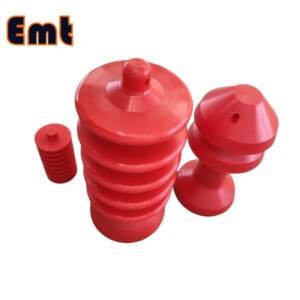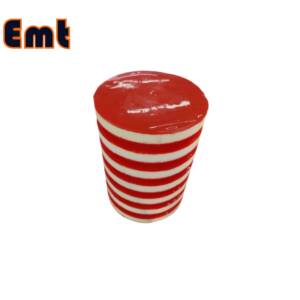Description
Introduction to Pigging Ball
The pigging ball’s spherical shape allows it to glide through pipelines effortlessly, easily navigating bends, elbows, and other structural challenges. Its ability to maintain constant contact with pipe walls ensures an exceptionally thorough cleaning. The design of the ball distributes pressure uniformly across its surface, enhancing the effectiveness of the cleaning process while reducing the likelihood of the pig getting stuck.
Incorporating brushes into the pigging ball significantly boosts its debris-removal capabilities. These brushes actively scrub the walls of the pipe, tackling stubborn deposits and reaching into crevices for a more thorough clean. The synergy between the ball’s smooth navigation and the abrasive action of the brushes achieves comprehensive coverage of the pipeline’s interior.
This dual-action design not only increases the efficiency of each cleaning run but also decreases the frequency of necessary pigging operations, which saves time and conserves resources. Moreover, the brushes play a crucial role in maintaining the pipeline’s internal diameter, promoting consistent flow and operational efficiency.
Key Features of Pigging Ball
Pigging balls boast a flexible design, adapting easily to various pipeline diameters and configurations. This flexibility is ideal for navigating complex pipeline geometries, including bends and elbows. They are made from durable materials like urethane, which withstands harsh chemicals and high pressures. This durability makes them suitable for the rigorous demands of the oil, gas, and chemical industries.
Efficient cleaning is another key feature of pigging balls. Their spherical shape ensures thorough contact with pipe walls, effectively removing debris and buildup. The even distribution of cleaning pressure enhances their effectiveness. Additionally, their simple and robust design allows for easy insertion and removal, minimizing maintenance downtime.
Lastly, pigging balls are versatile and cost-effective. They can clean, seal, and separate products within pipelines. Attachments like brushes or blades can enhance their functionality, tackling various contaminants. By reducing the need for chemical cleaners and manual cleaning, pigging balls offer significant cost savings. They also minimize environmental impact by reducing product waste, promoting more sustainable operations.
Parameters
| Name | Model | Performance | Technical Parameters |
| Foam Pig | LCQZ-RTH | 1. It is formed by one-time foaming of polyether polyurethane material. | Starting pressure: 0.2-0.3 MPa |
| 2. Soft texture, and good elasticity. | Density: 35 kg/m³~150 kg/m³ | ||
| 3. It has strong water absorption performance. And the deformation amount can reach 70%. | Withstand pressure: 7 MPa | ||
| 4. Remarkable effect on dewatering, degreasing, and drying of pipelines. | Stretch rate: 320% | ||
| Compression ratio: 60 | |||
| Flex life: 50,000 times | |||
| Attrition rate: 4 mm/100 km | |||
| Operating distance: 50 km~150 km | |||
| Operating temperature: -30℃~100℃ |
| Name | Customized Foam Pig | ||||
| Material | Polyurethane | ||||
| Light Density | 0.02-0.3g/m3 | ||||
| Medium Density | 0.08-0.12g/m3 | ||||
| Heavy Density | 0.13-0.16g/m3 | ||||
| Feature | 1. High wear resistance | ||||
| 2. Good cleaning performance | |||||
| 3. Low cost | |||||
| Payment | TT/LC | ||||
| Advantage | 1. They are lightweight and flexible. | ||||
| 2. Nice cleaning efficiency. | |||||
| 3. Accurate location tracking. | |||||
Advantages of Pigging Balls
Pigging balls offer versatility and efficiency, serving multiple functions like cleaning, sealing, and product separation. Their spherical design ensures consistent contact with pipeline interiors, leading to effective and thorough cleaning. This design efficiently removes debris and buildup, maintaining optimal flow and preventing blockages.
Ease of use is another significant advantage of pigging balls. Operators can quickly insert and retrieve them from pipelines, significantly reducing maintenance downtime. This quick deployment allows for continuous operation and minimal operational disruption, enhancing overall productivity. Additionally, the robust materials like urethane make pigging balls resistant to wear, tear, and harsh chemicals, extending their usability and cost-effectiveness.
Lastly, pigging balls are economical and environmentally friendly. They reduce the need for expensive chemical cleaners and decrease the frequency of manual cleaning, leading to substantial cost savings over time. Moreover, by clearing pipelines efficiently, they minimize product waste, reducing environmental impacts. Their adaptability also allows them to navigate complex pipeline structures without damage, ensuring broad applicability across various systems.
Frequently Asked Questions
What is a pigging ball?
A pigging ball is a spherical tool used in pipelines to clean, inspect, separate products, or perform sealing tasks. It moves smoothly through the pipeline, making contact with the walls to remove debris and residue.
How does a pigging ball work?
A pigging ball works by being inserted into a pipeline and pushed through by the product flow or a propellant. As it travels, its flexible, spherical shape allows it to adjust to varying diameters and navigate bends, effectively cleaning or inspecting the pipe.
What are the main benefits of using a pigging ball?
The main benefits include:
Efficient Cleaning: Provides thorough internal cleaning of pipelines.
Reduced Maintenance Costs: Lowers the frequency and cost of manual cleanings.
Minimized Downtime: Easy to deploy and retrieve, reducing operational disruptions.
Enhanced Product Recovery: Helps push residual products through the system, minimizing waste.
Can pigging balls get stuck in the pipeline?
While pigging balls are designed to navigate complex pipeline geometries, they can occasionally get stuck due to incorrect sizing, pipeline damage, or excessive buildup. Proper sizing and regular maintenance help minimize this risk.
How often should you replace a pigging ball?
The lifespan of a pigging ball depends on several factors such as the frequency of use, the nature of the materials it contacts, and the type of pipeline. Regular inspections will help determine when a pigging ball needs replacement, typically noted by visible wear or decreased performance.
Are pigging balls suitable for all types of pipelines?
Pigging balls are versatile but may not suit every pipeline type or condition. Factors like pipeline material, diameter, and the nature of the transported substances affect their suitability. Consulting with a specialist before use is advisable to ensure compatibility.


